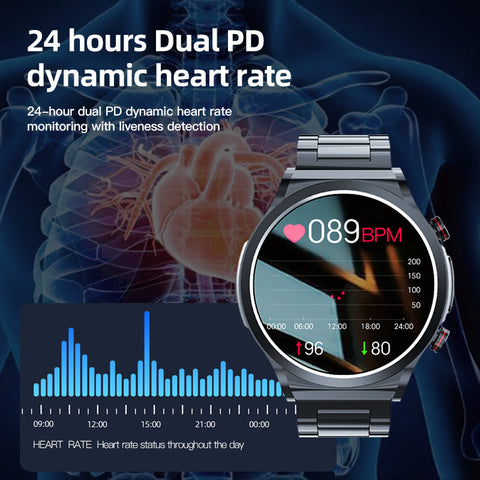Track Your SpO2 to Uncover Changes in Your Wellbeing
In the era of wearable technology, smartwatches have become more than just accessories; they are powerful tools for monitoring health and wellbeing. Among their many features, smartwatches now offer the ability to track SpO2 levels, providing users with valuable insights into their respiratory health and overall wellbeing.
Understanding SpO2 Monitoring: SpO2, or peripheral oxygen saturation, is a measure of the percentage of oxygen-bound hemoglobin in the blood. Traditionally, SpO2 monitoring has been performed using pulse oximeters in medical settings. However, advancements in wearable technology have made it possible to incorporate SpO2 monitoring into smartwatches, allowing users to track their oxygen saturation levels conveniently and continuously throughout the day.
The Importance of SpO2 Levels: Maintaining optimal SpO2 levels is crucial for overall health and wellbeing. Changes in SpO2 levels can indicate underlying respiratory issues, cardiovascular problems, or environmental factors affecting oxygen intake. Monitoring SpO2 levels can help individuals detect abnormalities early on, allowing for timely intervention and proactive management of respiratory health.
How Smartwatches Track SpO2: Smartwatches equipped with SpO2 monitoring capabilities use built-in sensors, such as photoplethysmography (PPG) sensors, to measure oxygen saturation levels in the blood. These sensors emit light waves that penetrate the skin and blood vessels, allowing the smartwatch to calculate SpO2 levels based on the amount of light absorbed by oxygenated and deoxygenated hemoglobin.
Uncovering Changes in Wellbeing: Tracking SpO2 levels with a smartwatch offers several benefits for uncovering changes in wellbeing:
-
Respiratory Health: By monitoring SpO2 levels continuously, individuals can detect changes in oxygen saturation associated with respiratory conditions such as asthma, COPD, or sleep apnea. Persistent decreases in SpO2 levels may indicate the need for further evaluation by a healthcare professional.
-
Physical Activity: During exercise or physical activity, SpO2 levels may fluctuate as oxygen demand increases. Smartwatches with SpO2 monitoring can provide real-time feedback on oxygen saturation levels during workouts, helping users optimize their exercise intensity and duration for maximum benefit.
-
Environmental Factors: Environmental factors such as altitude, air quality, or exposure to pollutants can impact SpO2 levels. Smartwatches equipped with SpO2 monitoring can alert users to changes in oxygen saturation levels in different environments, enabling them to take appropriate precautions to protect their respiratory health.
-
Sleep Monitoring: Monitoring SpO2 levels during sleep can provide insights into respiratory function and sleep quality. Individuals with sleep disorders such as sleep apnea may experience drops in SpO2 levels during episodes of breathing cessation, known as hypoxemia. Smartwatches can track these fluctuations and help users identify potential sleep disturbances.
Smartwatches equipped with SpO2 monitoring capabilities offer a convenient and effective way to track respiratory health and uncover changes in wellbeing. By continuously monitoring oxygen saturation levels throughout the day and during various activities, individuals can gain valuable insights into their respiratory function, cardiovascular health, and overall wellbeing. Whether you're managing a chronic respiratory condition, optimizing your fitness routine, or simply striving for better health, harnessing the power of smartwatches to track SpO2 levels can empower you to take proactive steps towards a healthier and more fulfilling life.













